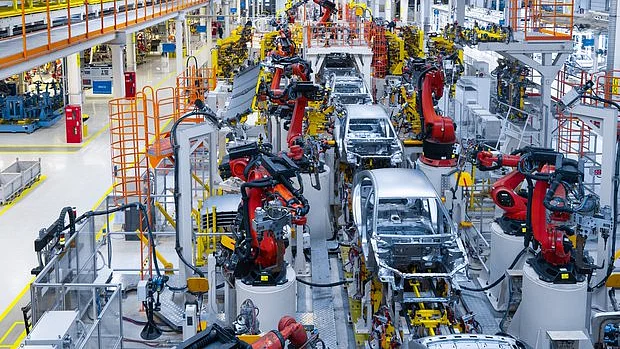Economy is in a recession or recess, but in no mood to get up
While it may be debatable whether it is a recession or recess, what is more worrying is that there are no green shoots visible

Any government official or minister would say that the slow down in the economy is 'very temporary' and it will recover soon. They mean that the economy is in a recess, taking a temporary breather from a great run. They have been using this official 'code language' for the last two years or so.
And the brief recess never ends, the abysmal 4.5 per cent Quarter 2 GDP growth rate being the latest proof. A never- ending recess is known as "stagflation" in economics jargon. A stagflation is defined as persistent high inflation combined with high unemployment and stagnant demand in a country's economy. A stagflation by itself is very hurting to the people.
Some independent economists are saying that the economy is already in a real recession, this is not just a slow down. A recession is generally identified by a fall in GDP (negative growth rate in GDP) for two successive quarters. As per official statistics, the June quarter's GDP grew by a mere 5 per cent and the September quarter's GDP is even lower.
But, as per the estimates of these independent economists, the economy has already recorded negative growth rates in the last two quarters. They base their argument on two valid grounds. One, the present system of calculating GDP does not really capture the actual data of the 'informal sector'.
The growth rate for the 'informal sector' is simply extrapolated based on the growth rate recorded in the corresponding 'formal sector'. For example, if the 'formal' manufacturing sector (big industry) grew at 0.6% in June'19 quarter, it is assumed that the 'informal' manufacturing sector' (micro and small-scale industry) also grew at same rate. The Central Statistics Office (CSO) has no system to collect real data from millions of informal industries spread across the country.
It is a well-documented fact that Demonetisation and the ill-conceived implementation of GST have hit the 'informal sector' the hardest. A quarter of informal industries, in a wide range of sectors, from power-looms, garments and handicrafts to bicycles, engineering goods and auto ancillary, etc. have either drastically reduced their operations or closed down. Hence, the 'informal sector' must be recording a high negative growth rate which gets overlooked by the present method of 'extrapolation'.
In 2015, India changed the way that it calculates GDP numbers. The Modi government shifted to the new series for GDP calculation, for which the base year was changed from 2004-05 to 2011-12. Another change brought in the system of GDP calculations is that India now calculates the value that consumers get to enjoy and not the value that producers spend.
India now measures GDP by market prices instead of factor costs, to take into account gross value addition in goods and services as well as indirect taxes. Though this basic change in the methodology of GDP calculation looks sensible, they cause huge confusion in comparing figures. For instance, for fiscal 2015, growth was sharply revised upwards to 6.9 per cent under the new calculation from the 5 per cent reported earlier.
While it may be debatable whether it is a recession or recess, what is more worrying is that there are no green shoots visible. Informal sector, agriculture and industrial production are in distress. In exports, India is confined to export of a few niche products. India could not bring in any paradigm changes in the manufacturing and export eco-systems to become part of global value-chains.
Sluggish investments in the farm sector over several decades have led to a steadily decreasing share of agriculture in Gross Value Added (GVA). Its share in GVA has come down from 21 per cent at the start of the century to 14.39 per cent in 2018-19.
But more than 50 per cent of the population depends on agriculture, leading to a decline in rural aggregate demand. The index of industrial production (IIP) statistics for August 2019 showed that 15 out of the 23 industry groups in the manufacturing sector have displayed negative growth. Manufacturing is another labour-intensive sector which is losing its glory.
This Diwali festival sales did not really change the narrative of a slowing economy. Festival sales data from automobiles and consumption - the two sectors that have become the face of slowdown - have not displayed any increasing confidence levels of people. For the e-commerce industry, last year's festive sales had clocked a record 76 per cent year-on-year growth.
As per a report by consulting firm RedSeer, the year-on-year growth for e-tailers in this festival season this year was a muted 30 per cent. Brick and mortar retailers had a tepid sales growth of 7 to 9 per cent in this Diwali, still better than their worst fears.
Car Sales rose 7 per cent during this Navratri and Dhanteras season compared to the year-earlier numbers for the same festive period. The small uptick comes after sales have dropped by double digits every month from April to September. In September this year, the total automobile industry sales was the lowest for the month in at least 10 years.
Weighed down by an economic slowdown, major commercial vehicle (CV) companies reported a decline of around 20 per cent in sales volumes in October 2019, compared to the year ago period. But luxury cars had a field day.
Mercedes-Benz delivered over 600 cars during Dhanteras across different cities in India. Lamborghini posted a significant 30 per cent rise in sales in 2019. But a few sparks in the sale of luxury cars can not fire up the economy.
(V Venkateswara Rao is a retired corporate professional and a freelance writer)
Follow us on: Facebook, Twitter, Google News, Instagram
Join our official telegram channel (@nationalherald) and stay updated with the latest headlines
